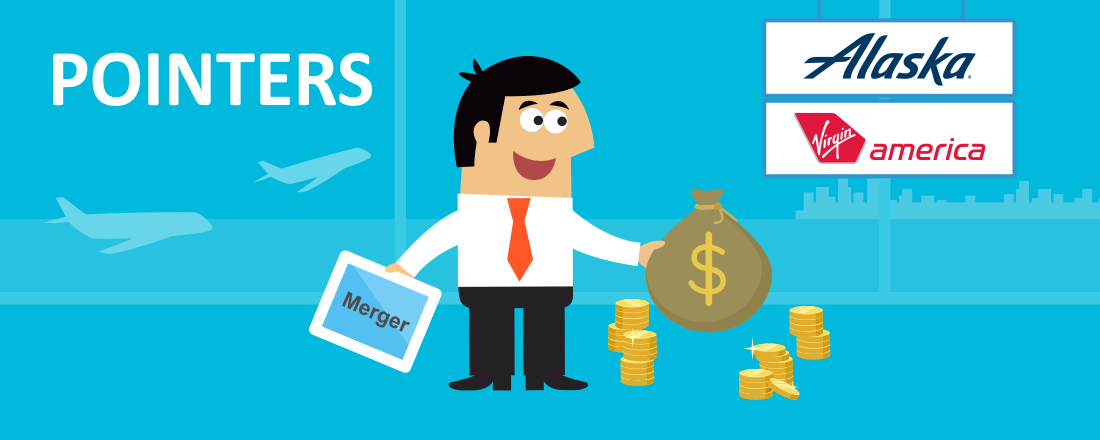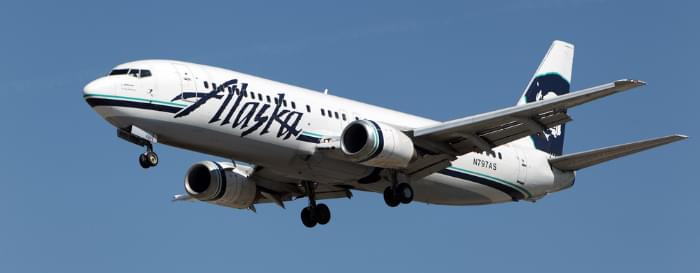
On April 4, Alaska Air Group Inc. announced it will purchase Virgin America Inc. in a $2.6 billion deal that vaults the combined company to the top carrier on America’s West Coast.
The merger was inked after some heated competition from rival JetBlue Airways. The no-frills New York-based airline also vied for billionaire Richard Branson’s London-based Virgin Group offshoot, celebrated for its mood lighting and envious in-flight entertainment. JetBlue, however, backed out after the bidding war became too rich.

Alaska Air CEO Brad Tilden said the company won Virgin America after some “hard-fought competition.” When complete, the transaction will create the fifth-largest U.S. airline.
The last decade has brought a frenzied pace of mergers in the space, reducing the industry to a mere handful of companies. The top four have a corner on more than 80 percent of the U.S. travel market.
Virgin America accounts for about 1.5 percent of U.S. domestic flight capacity. Alaska Air and its Horizon Air subsidiary account for 5 percent.
The pair will have to overcome some high hurdles in the integration. The duo must integrate the contracts of workers with contrasting pay, benefits, and seniority. The conjoined company will also have to train pilots and maintenance crews on a new aircraft type. Virgin America’s fleet is made up of Airbus Group SE A320-family planes. Alaska Air currently flies Boeing Co 737s.

Investors and flyers are skeptical about how well the merger will go–and rightly so. A number of the latest and largest airline mergers have not gone without a number of hiccups.
Still, Alaska Air said its unions and pilot leadership are onboard with the merger. It is also confident the merger will clear the hurdles and take place. Alaska Air said it might continue to use the valuable Virgin America brand in some form. The combined company plans to retain Alaska Air’s Seattle headquarters.
Scale, Scope, and Synergies
Alaska is buying California-based Virgin America to expand in Los Angeles and San Francisco, as well as to be able to offer more connections to international airline partners. Additionally, Alaska Air expects to benefit from Virgin America’s corporate contracts and rock-star-like status among loyal, savvy, and deep-pocketed Silicon Valley travelers.

“While California is actually our second-biggest state in terms of flying, we don’t fly east-west out of there,” Tilden said, adding the company had been considering an acquisition for a couple years. “We’ll go from serving one out of the top 10 destinations out of San Francisco to serving all 10.”
Alaska Air said in a statement the deal will generate $225 million in annual synergies once the companies are fully merged. The deal is expected to receive shareholder and regulatory approvals by January 1. The company does not anticipate any regulatory holdups given the minimal overlap between the two.
While the deal awaits the necessary approvals, the two companies will operate as separate entities.
Alaska Air’s Mileage Plan and Virgin America’s Elevate frequent flyer program will remain active until the deal completes. As the transaction progresses, Alaska Air promises to keep frequent flyers updated. The company also stressed that the merger will “not impact your flying experience.”
Upon the deal’s closing, Alaska Air and Virgin America vow to seamlessly integrate the frequent flyer programs with no disruption to members’ earnings or redemptions, while also serving flyers on a much broader scale.
Time will tell how well the integration goes and how frequent flyers are impacted. But there are obvious benefits to be had.
In the latest Airline Quality Rating study, which evaluates American airlines based on things like arrivals, departures, and lost bags, Virgin Airlines commanded the top spot. Alaska landed on the fifth rung, behind Virgin, JetBlue, Southwest, and Delta.
On-time arrivals are likely to show some improvement when the two merge. According to the study, 87 percent of Alaska Airline flights landed on time versus 82% of Virgin’s. Alaska Air also boasted the lowest rate of passenger complaints, at about half Virgin’s rate. On the other hand, Alaska Air was about three times as likely to mishandle baggage and nearly five times as likely to bump passengers due to overbooking.
Yet Alaska placed first, right in front of Virgin, on the Wall Street Journal’s most recent airline rankings. Alaska has held the top spot for the last three years running.
Alaska Airline’s roots date back to 1932. It is the busiest carrier at Seattle-Tacoma International and Oregon’s Portland International. Virgin America, meanwhile, launched in 2007. It less than a decade, it has become a formidable player in California and a favorite carrier among scores of flyers.
The two need each other to effectively compete in the narrowing and increasingly competitive airline space. Both have found it difficult to challenge the industry goliaths.
So, disappointed investors and nostalgic flyers, including Virgin America founder Richard Branson, who wrote on his blog that he was saddened that “our wonderful airline is merging with another,” can take heart in the fact that the merger just might save the two.
Popular and profitable are two very different things in this cut-throat industry.
